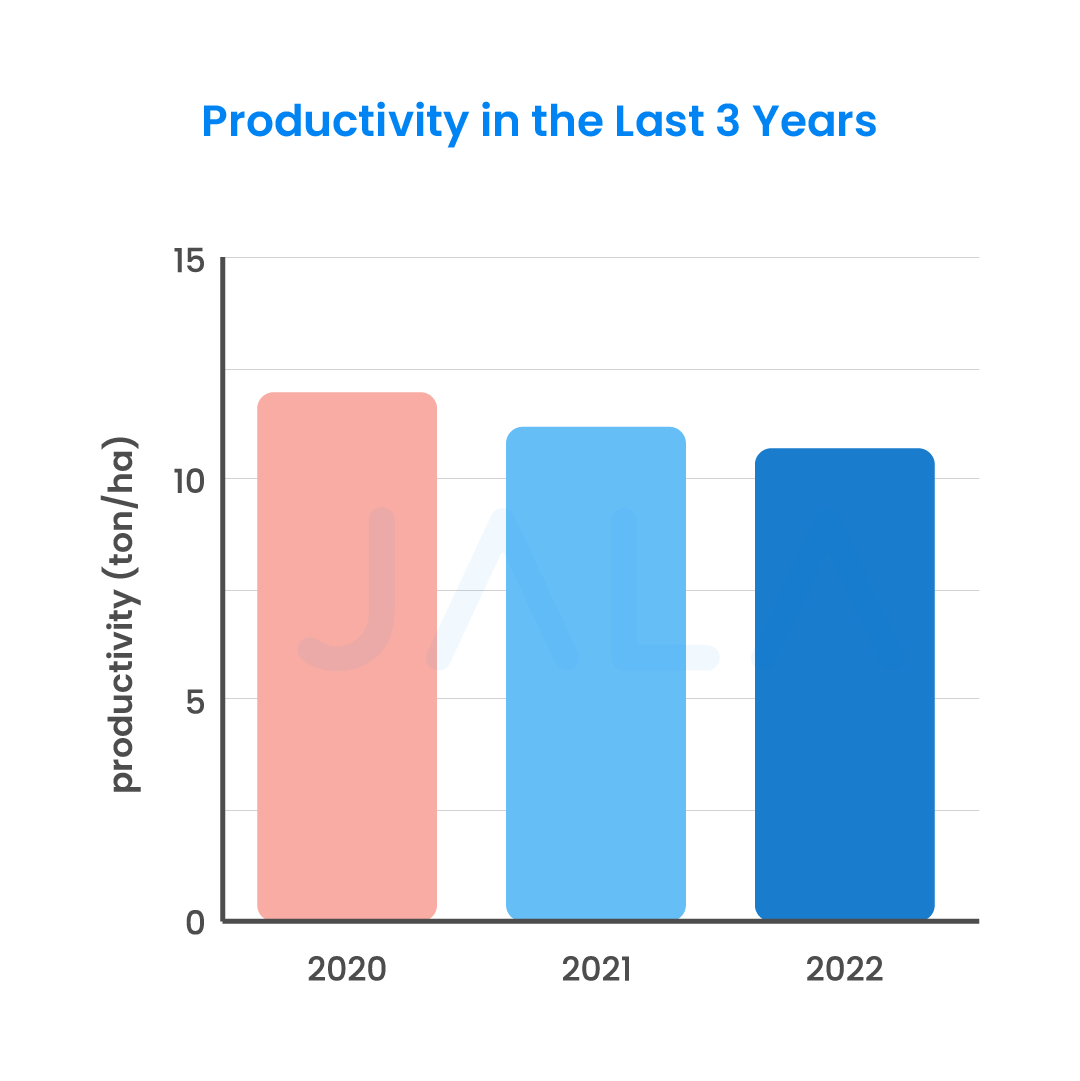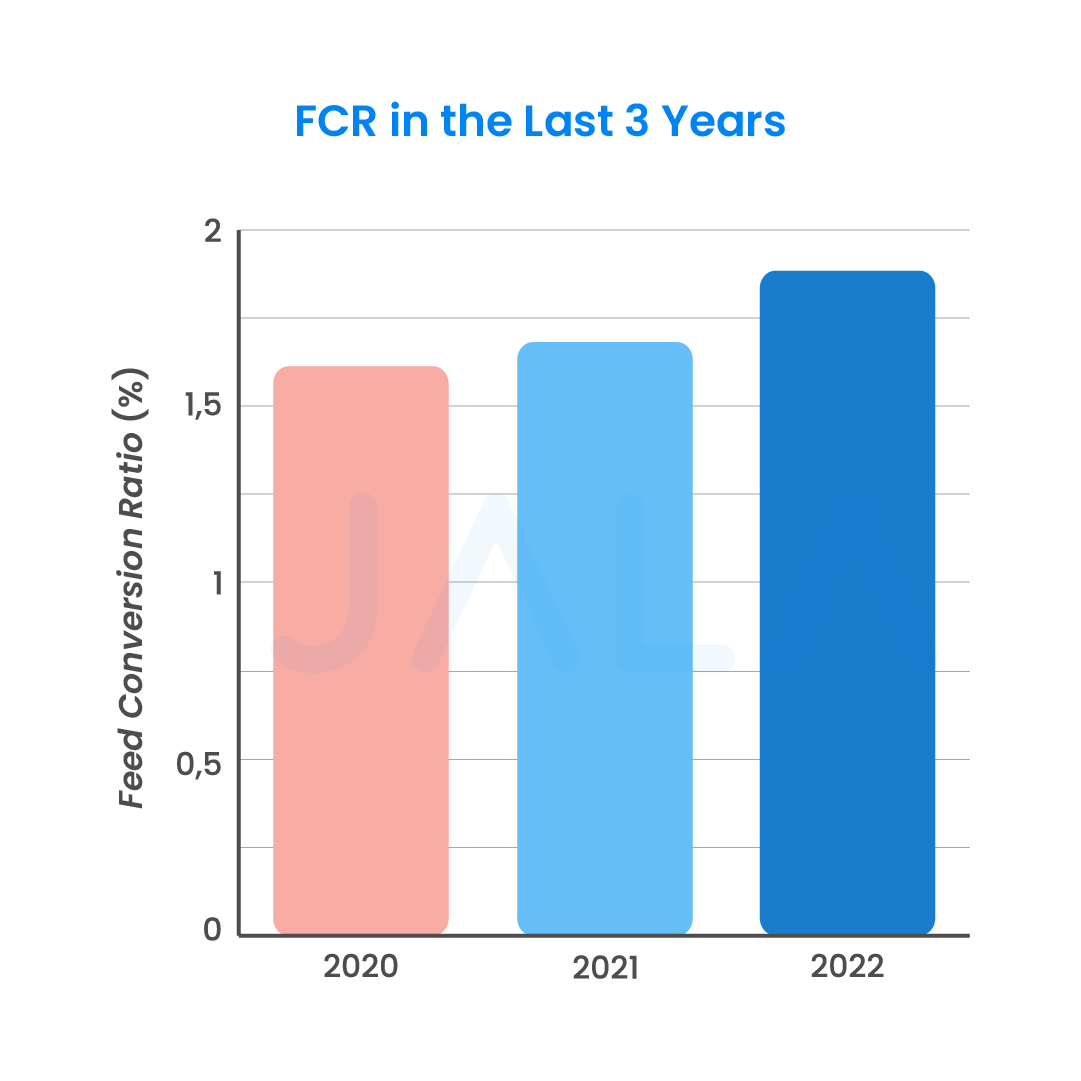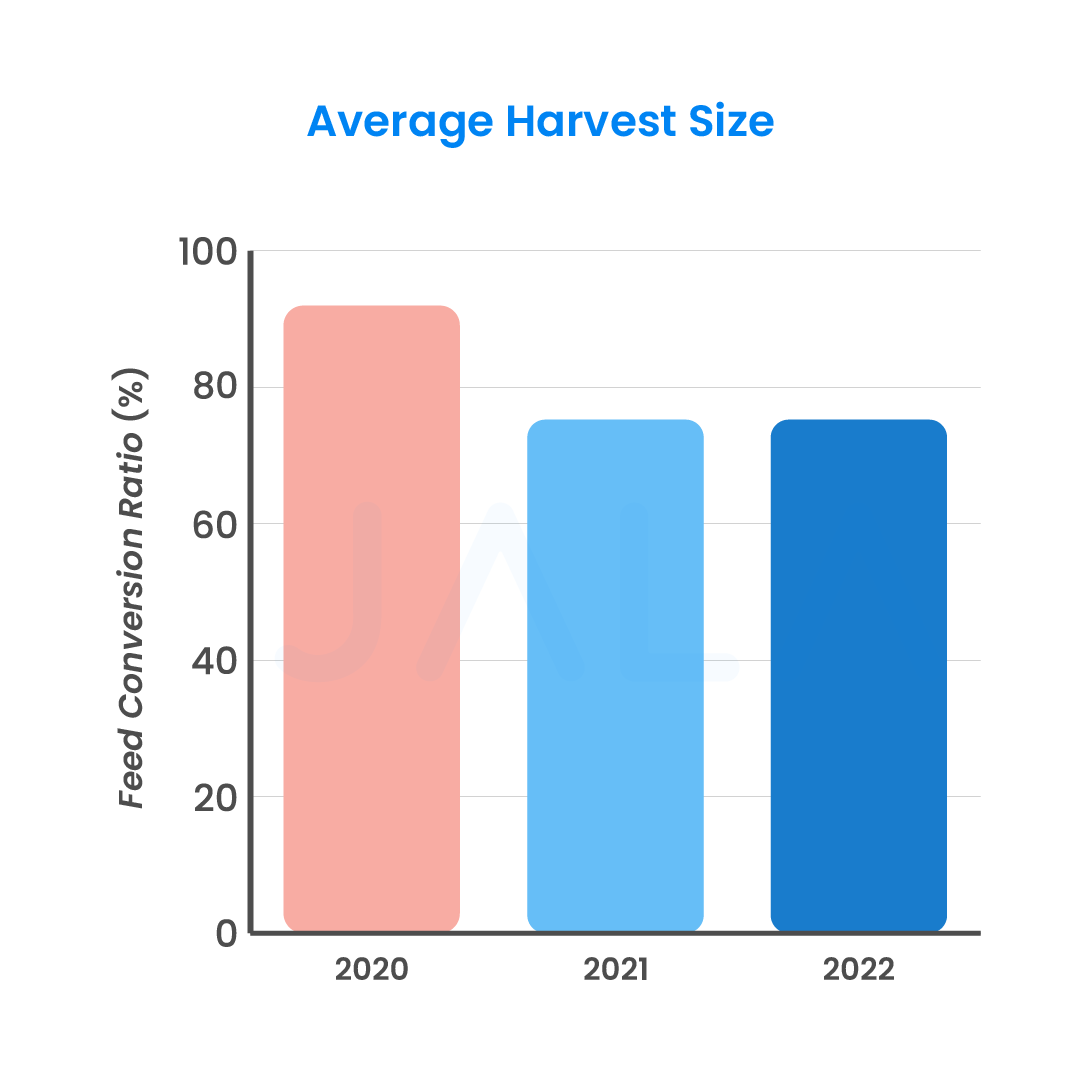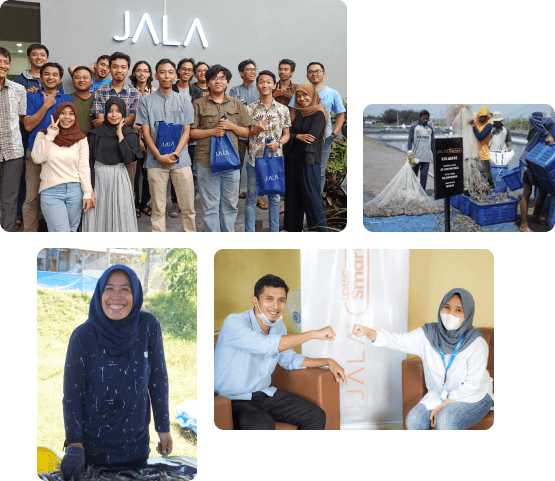
Shrimp farming in Indonesia has the potential to thrive since it is supported by geographical and climatic factors. The geographical conditions in Indonesia, which is dominated by water, makes it the country with the second longest coastline in the world. As a tropical country, Indonesia’s climate conditions become a significant factor in cultivation. Its two major components, namely air temperature and rainfall, affect the productivity of shrimp farming.
Shrimp farming productivity in 2022
Shrimp farming productivity in 2022 tends to decline compared to the previous year. Its value only reached 10.68 tonnes/ha, a decline from 11.7 tonnes/ha in 2021. Productivity has declined month after month since February 2022. This tendency has occurred in cultivation systems with stocking densities of 80-300 ind/m2 and >300 ind/m2.

In 2022, shrimp farming productivity in Java Island is relatively lower compared to other regions in Indonesia. The productivity rate in Java Island is 9.42 tonnes/ha, while the total cumulative rate outside it is 12.22 tonnes/ha.
Productivity at stocking densities >300 ind/m2 remains the highest, reaching 30.18 tonnes/ha. This value boosted the overall average productivity to 11.78 tonnes/ha. Without super-intensive cultivation, average productivity would be only 10.19 tonnes/ha. With only 6% of total cultivation, cultivation with a super-intensive system can increase national shrimp farming’s average productivity. Furthermore, the decline in the Survival Rate (SR) and the size of the shrimp during harvest can indicate the productivity of Indonesian shrimp farms in general.
Survival Rate performance in 2022
One of the reasons behind the decline in productivity is that SR’s performance has also declined. The average SR in 2021 is 68.84%, but it falls to 55.83% in 2022. Decline was faster in cultivation systems with stocking densities more than 300 in/m2 and slower in intensive systems. This indicates that the medium stocking densities is less risky. Looking at the time, SR continues to decline as we approach September. This occurrence is related to the transition from the dry season to rainy season.

Feed Conversion Ratio (FCR) in 2022
Meanwhile, the Feed Conversion Ratio (FCR) in cultivation systems with stocking densities of ≤80 ind/m2 and >300 ind/m2 increases. In 2021, the FCR is at 1.68, while in 2022 it reaches 1.84. The average FCR in general at a stocking density of >300 ind/m2 is 1.78. The mean value of FCR remains in the less-than-ideal FCR range (1.6-1.8).

The shortened cultivation duration and high FCR cause cultivation to be less efficient. It is necessary to evaluate the feed calculation based on cultivation conditions. A low feed efficiency is an indicator of cultivation failure.

Compared to previous years, the FCR value tends to rise. This indicates a decreased feeding efficiency. FCR values increase with stocking densities at 80-300 ind/m2 and >300 ind/m2. The best feed efficiency is attained in cultivation with a stocking density of >300 ind/m2.
Shrimp size in 2022
In terms of size, harvested shrimp size in 2022 is relatively larger by 2.31% compared to the previous year. In 2022, cultivation with a stocking density of 80-300 ind/m2 produces larger shrimp. Shrimp growth is indicated to be faster because the average size of shrimp increases and cultivation duration shortens. This only happened in January and February 2022 because the average size of shrimp then declined in the following months.
This could be the impact of the relatively faster cultivation duration. Furthermore, the SR value also declines. This will have an impact on productivity, which also declines.

Shrimp farming performance throughout the year
Overall, shrimp farming performance in 2022 tends to decline. The data shows that productivity and SR are declining, while FCR is rising. However, the harvested shrimp size at harvest is larger in the cultivation with a stocking density of 80-300 ind/m2.
To prepare for 2023, several actions are needed as a solution to improve cultivation performance, namely:
- Halting the use of chemical disinfection since the waters have been overdosed of chemicals, causing bacteria to become resistant
- Using disease-resistant shrimp genetics (SPF/SPR fry)
- Getting to know the 'difficult' and 'easy' times in cultivating
In addition, you can listen to a full review of the shrimp industry in 2022 and strategies for 2023 by watching the live streaming of the Shrimp Outlook 2023 broadcast on JALA's YouTube channel.
—
Data were collected from JALA App in 2021 and 2022.





